It looks like you're using an Ad Blocker.
Please white-list or disable AboveTopSecret.com in your ad-blocking tool.
Thank you.
Some features of ATS will be disabled while you continue to use an ad-blocker.
share:
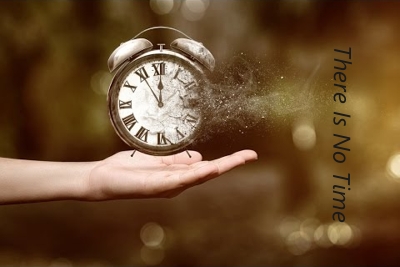
The Escape Room
Sarah stares at the podium, waiting for the next speaker to appear….but they never do. She sits quietly in the audience, patiently listening to the silent murmurs of the other patrons. Only, as she looks around, she notices there are no other patrons. She was alone. The only murmurs were her thoughts, which she had subconsciously identified as other humans, so she would feel less alone.
What does she really hear then? The sound of an overhead fan clicking rhythmically overhead. The creaking of her seat as she adjusts her position. The ticking of an unknown machine in the distance. These were the only real sounds in the room.
It was an unnatural silence. Like when you walk into a room and it goes quiet, all eyes looking directly at you. Uncomfortable, she shifts in her chair again just so she can hear it creak. Where was the next speaker? she thought. It’s been an eternity since someone stood at the podium, centuries since she’d heard another’s voice. Yet, it seemed like she’d been here for mere minutes.
Sarah stands up and walks the room. This doesn’t feel right…. It’s not real. Walking the perimeter she gently pushes on the walls. She tries to open the door, and steps behind the curtains on the stage. No way out. There was nothing but herself, the stage, the auditorium, and the podium.
What then, must she do to free herself? She looks down in deep thought, walks back to the auditorium, and then sits down again in her original chair. This is where she was when she first arrived.
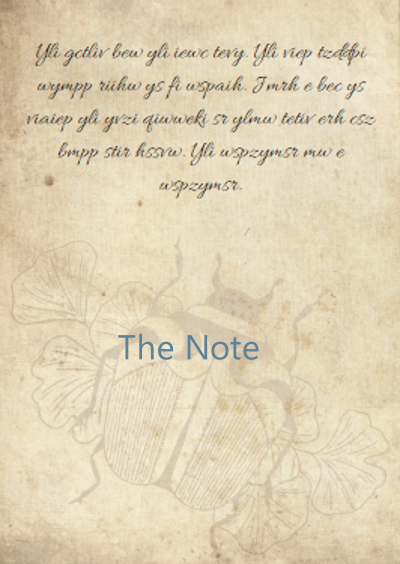
The Note
The podium was the main object in her line of sight. Taking a deep breath, she quickly traverses the steps and stands behind it. It had a white piece of paper with some writing on it, a pen, and a cup of clear liquid on the shelf below. The writing on the paper is in some type of code. The letters are all scrambled and there is no sentence structure. She thinks How am I supposed to read this?
Yli gctliv bew yli iewc tevy. Yli viep tzddpi wympp riihw ys fi wspaih. Jmrh e bec ys viaiep yli yvzi qiwweki sr ylmw tetiv erh csz bmpp stir hssvw. Yli wspzymsr mw e wspzymsr.
She grabs the glass of what she thinks is water and places it under her nose. No scent. She holds it up to the light. Nothing inside of it that she can see….but, she doesn’t know for sure what it is. She puts the cup down and tries to figure out her next move. Picking up the paper again, she looks at it closely for a few minutes and thinks.
I need to decipher this. That’s the only way I’ll be able to find out what’s going on. Each letter has been substituted with another. So, if I can find a pattern, I’ll be able to solve this puzzle. This should be easy. She picks up the pen and gets to work on the cypher…
The story will continue once the cypher has been solved. We need to know what is on the paper…Can you solve it?
The cypher was the easy part. The real puzzle still needs to be solved. Find a way to reveal the true message on this paper and you will open doors.
The solution is a solution.
originally posted by: NightFlight
The cypher was the easy part. The real puzzle still needs to be solved. Find a way to reveal the true message on this paper and you will open doors. The solution is a solution.
Nice! Thank you. we can proceed. Part two coming shortly..
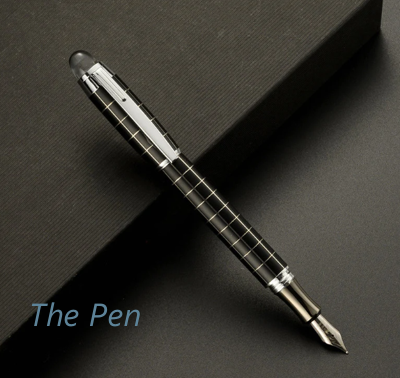
The Pen
She did it! She solved the cypher! But what did it mean? The solution is the solution…
Sarah sat down on the steps next to the podium deep in thought. She looked at the message, subconsciously clicking and unclicking the cam of the pen while she reads it over again and again. It took her a few minutes to realize the pen head wasn’t moving when she hit the cam, it just stayed in the on position.
Thinking that was unusual, she inspected the pen to see what the issue was. She knew it worked, she’d just used it to solve the cypher. One side of it was see through and she could see that the barrel was full. The clip was a bit loose, and she could slide it back and forth but that was just the clip, it had nothing to do with the function of the pen. Everything seemed like it was fine. Why wasn’t the cam working then?
Twirling the pen around in her hand, she noticed on the other side in very dark type the words Solution Part One. It was barely visible, and you had to hold it up to the light at just the right angle to even see it, but it was there.
What does that mean, solution part 1? And what/where was the other part? Could it be…
She grabs the cup of water and holds it to the light. It also had words etched onto the glass in very small print. “Solution Part 2”. Ok, she knows she needs to mix the ink from the pen with the water, but how does she get the ink out of the pen and how does she wet the paper with it?
Sitting down on the steps, she comes up with three possible solutions. But, if she chooses the wrong one, she’ll lose her only chance to get out of the room. Which one should she try?
#1 - Untwist the pen to get to the ink cartridge

#2 – Twist the pen body, then click the cam

#3 - Click and hold the cam while pushing the clip forward

The right answer will continue the story. The wrong one will lead to certain doom....
#2 is wrong.
#3
#3
edit on 23/5/2024 by NightFlight because: Left out some important
a reply to: NightFlight
click the pen..it will tell you if you chose correctly or not..
also, George Carlin is hidden somewhere in my two posts...just saying. Things are clickable..
click the pen..it will tell you if you chose correctly or not..
also, George Carlin is hidden somewhere in my two posts...just saying. Things are clickable..
edit on 5 23 2024 by blend because: (no reason given)
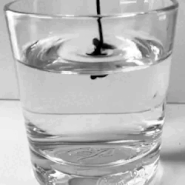
The Glass
The ink filled the glass with a dark liquid and Sarah used the pen to stir it up. The liquid turns clear again and she knows that the mixture is ready. Now she just needs to find a way to soak the paper with it.
Looking around the room, she sees no other tools. She has a glass that is half full, a pen, and a 8x11 piece of paper. This seemed like it’d be so simple, yet she didn’t want to make a mistake. If she messed it up, the hidden message would be gone, and she’d have no way of getting out of the room. She just couldn’t take that chance.
Ok, what to do here. She needs to put the paper into the glass, not pour the liquid on the paper. She has no idea where the message is on the paper and she has to make sure the whole sheet gets soaked. How would she do that?
A. Fold the sheet until its small enough to place in the glass and let it sit for a bit to absorb the water.
B. Crumble the paper up in a ball and place it in the glass, swishing the liquid around until it covers the whole sheet.
C. Rip the paper into 4 even pieces, submerge them one at a time, then piece them back together.
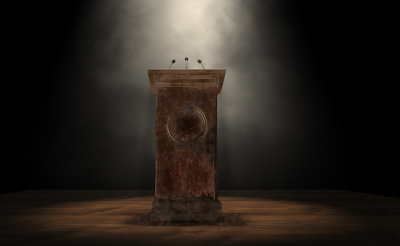
The Podium
She pulls out the wet pieces and looks at each one. Nothing yet. Why? Maybe it must dry before you can see what’s written on it. She takes the pieces to the podium and puts them back together on the shelf, hoping that the flat surface and additional light will make them dry faster.
She impatiently waits while they dry. It was taking an awful long time. As she stares at the page, her mind starts to wander back to the days when she was presenting her theory on time. She remembered standing at the podium, presenting facts, slides, and graphs to an audience of scientists. They were very skeptical about what she presented. Some even got up and left halfway through her presentation.
The memory of her first presentation came to the forefront of her mind and she replayed it as though it was yesterday.
Time is not what we think. It isn’t a measure of hours and minutes, it’s a measure of action, reaction, coupled with emotion. It isn’t linear, it’s spherical. Which means it encapsulates our very being and we ourselves define how time passes for each of us. It’s a moment or memory that measures time, not the ticking of the clock.
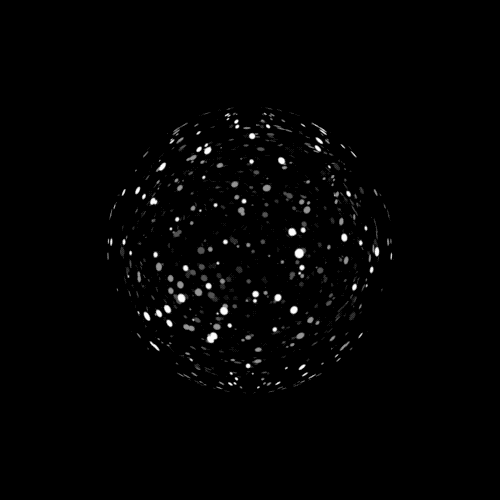
Let’s do an experiment. I want each of you to think back to your wedding day (or another momentous event for those who aren’t married). I’m sure you remember it well. The way you were feeling, the weather that day, the reception afterwards. But I would guarantee that you have no hard memory of how long that event took to complete.
Do you remember the event because of how you felt or because of the time and date it took place? Most would pull it from their memory because of how they felt. Then they would remember the day it occurred, but all would assign a perceived amount of time to it.
Do you remember exactly how many minutes/hours it took to complete the ceremony? Or do you remember only that it took a long or short amount of time? Most only remember it was a long/short ceremony. That’s because time is measured in the now. There is no future or past, there is only this moment. And it is only events that are emotionally filled that we remember.
A divorce might leave a memory in your head. Is it the emotional turmoil the divorce took you through that you remember or is it the exact amount of time it took to complete? I would imagine that you assigned a time frame to it, and it is not the real amount of time that took place.
You assigned a time frame to it from the number of memories that you hold about it. Your brain does that. The brain will take an event that has a lot of positive memories and shorten the amount of time it took to complete it. It will also take an event that was traumatic and lengthen it because, well, it was painful, and your brain wants to remember it.
This happens a lot. We all see and measure time differently. According to what we feel. Not according to what the clock says on the wall.
That wasn’t received very well. She knew she was on the right track though, and so she carried on with her experiments. Many times, she used herself as the subject. Matter of fact, she remembers the moment before she was here. She had just had a breakthrough and was sooo excited! She remembers turning on the time dilation machine, walking into the chamber, and then…this.
Could she be caught in her experiment?
The paper what drying and Sarah notices that there are words appearing on the page. It was a set of specific directions on how to get out of this room. It said:
To begin you must push down on the podium. One of the stage lights turn and shine on a question. You must turn the podium in the direction of the light and answer the question with the right words to continue. Every right answer will cause the light to illuminate another question for you. Make sure you turn the podium towards that light before you answer. If you miss, the podium will reset, and you will have to try again.
That didn’t sound too complicated. Turn the podium then answer the question. Sarah wonders how hard the questions will be but is anxious to get out of the room. Gathering all her courage, she grips both sides of the podium and pushes down…
The stage light moves to the right and Sarah shifts the podium in that direction. She hears it lock into place and reads the question aloud:
You are standing on the street looking up at a person who is about to jump from the 50th floor of a building. You yell” he’s gonna jump!” at the exact same time a person on the 49th floor yells “he’s jumped!”. Why would you both yell two different things at the same time?
Sarah thinks about this for a moment and comes up with three possible solutions. She is relatively sure which one it is but wants to be one hundred percent sure before she speaks it aloud. Her choices are:
1. Gravitational time dilation
2. perceptual difference
3. Temporal anomaly
you are correct!
The story goes on!
I'm glad you're having fun. I've always wanted to do something like this so, I appreciate you playing along. Who knows? You might get something cool at the end..probably will!
Thank you for having some fun with me!
blend
The story goes on!
I'm glad you're having fun. I've always wanted to do something like this so, I appreciate you playing along. Who knows? You might get something cool at the end..probably will!
Thank you for having some fun with me!
blend
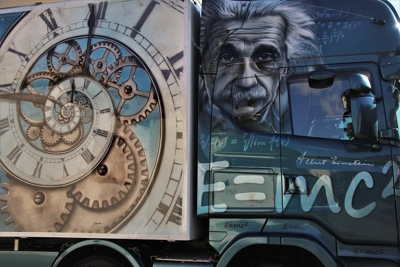
Sarah makes her decision and states it out loud. The light fades and she’s worried that she gave the wrong answer. Sitting in the dark for what feels like an eternity, her mind races while she waits.
Suddenly, another corner of the room lights up and Sarah turns the podium to the left. It clicks into place and the next question is revealed. It reads as follows:
You are in a car crash and time seems to stand still. You know (in your mind) you have mere seconds to react. But in your head, it seems like you have all the time in the world to respond. Some say this is time dilation but what is it really controlling this phenomenon?
Sarah has been working on this for years. She knows that there are several possibilities for this question. Her research points to the simplest one that can be scientifically measured. Taking a moment to collect her thoughts, she comes up with a few possible solutions:
1. Hippocampus – responsible for learning, memories, and emotions.
2. Bullet Time - time passing like in the bullet shot from the matrix movie.
3. Time Warp – any distortion of space-time.
Sarah lifts her head determinedly up to the light and speaks her truths out loud. It may not be the accepted answer, but she knows in her heart it is
the right one. Hippocampus…
The hippocampus is the region of the brain that is responsible for memories. Sarah knows that memories are the only way we track time. It is also the way we can speed up or slow down time. In a moment of stress (highly emotional moments), spatial/memory neurons fire more rapidly than in normal situations. This gives us the superhuman ability to slow down time by capturing more data or “screenshots” of the event that is taking place.
The light goes out and Sarah is captured in darkness once more. Her brain starts to flood with memories of her lab. How she loved that place. A large pole barn located in the middle of nowhere, she had worked there for years. All the failures she’d had, all the triumphs…scientific data that will never be seen. She stops for a minute…why would it never be seen?
This was an unusual thought. Why would she even think that? Scanning her brain for a clue she retrieves a scene from her memory banks. She remembered she had just made a huge discovery and, as she was celebrating, she heard a loud explosion come from the generator. A series of small explosions followed, and she remembers turning on the time dilation machine and running into the chamber right before the fire engulfed the room.
Had she died? No…she didn’t think so. Was she trapped in her own mind then? Possibly…she couldn’t figure it out and quite honestly, she was a bit afraid of the answer...
The spotlight was shining again, and Sarah turned the podium in its direction, reading the next question out loud…
This was a very weird question that she couldn't come up with a plausible answer to. It could be philosophical, metaphysical, scientific. The first two questions were based on science. This last one was written as though it could be philosophical. “The world is an illusion” is from ancient Greece.
The premise is that everything in this universe is created by the mind and therefore not real. But Sarah knew that the memories we collect are real. The moments that we experience are too! Those are possibly the only real things the world offers.
But if time doesn’t exist and we run on a world built on memories/emotions, then that would mean…the answer, it was so simple!
Sarah blurted it out before she could think any further: “Nowhere! You go nowhere!”
The stage light dims, and the podium moves aside revealing stairs underneath it. There is a light protruding from the opening and Sarah moves down the stairs quickly, excited to see what’s at the bottom.
As she looks ahead her excitement changes to fear. Before her was a stage with a podium on it. She was once again alone, trapped in her own mind. Would this nightmare ever end?
Thanks for playing!
blend
Videos linked in the story:
The word Time appears in the story 29 times. 28 are visible, one is hidden...can you find it?
The hippocampus is the region of the brain that is responsible for memories. Sarah knows that memories are the only way we track time. It is also the way we can speed up or slow down time. In a moment of stress (highly emotional moments), spatial/memory neurons fire more rapidly than in normal situations. This gives us the superhuman ability to slow down time by capturing more data or “screenshots” of the event that is taking place.
The light goes out and Sarah is captured in darkness once more. Her brain starts to flood with memories of her lab. How she loved that place. A large pole barn located in the middle of nowhere, she had worked there for years. All the failures she’d had, all the triumphs…scientific data that will never be seen. She stops for a minute…why would it never be seen?
This was an unusual thought. Why would she even think that? Scanning her brain for a clue she retrieves a scene from her memory banks. She remembered she had just made a huge discovery and, as she was celebrating, she heard a loud explosion come from the generator. A series of small explosions followed, and she remembers turning on the time dilation machine and running into the chamber right before the fire engulfed the room.
Had she died? No…she didn’t think so. Was she trapped in her own mind then? Possibly…she couldn’t figure it out and quite honestly, she was a bit afraid of the answer...
The spotlight was shining again, and Sarah turned the podium in its direction, reading the next question out loud…
If The world is an Illusion that the Mind creates, where do you go when the illusion has Ended?
This was a very weird question that she couldn't come up with a plausible answer to. It could be philosophical, metaphysical, scientific. The first two questions were based on science. This last one was written as though it could be philosophical. “The world is an illusion” is from ancient Greece.
The premise is that everything in this universe is created by the mind and therefore not real. But Sarah knew that the memories we collect are real. The moments that we experience are too! Those are possibly the only real things the world offers.
But if time doesn’t exist and we run on a world built on memories/emotions, then that would mean…the answer, it was so simple!
Sarah blurted it out before she could think any further: “Nowhere! You go nowhere!”
The stage light dims, and the podium moves aside revealing stairs underneath it. There is a light protruding from the opening and Sarah moves down the stairs quickly, excited to see what’s at the bottom.
As she looks ahead her excitement changes to fear. Before her was a stage with a podium on it. She was once again alone, trapped in her own mind. Would this nightmare ever end?
Thanks for playing!
blend
Videos linked in the story:
The word Time appears in the story 29 times. 28 are visible, one is hidden...can you find it?
new topics
-
An Interesting Conversation with ChatGPT
Science & Technology: 4 hours ago
top topics
-
Have you noticed?? Post Election news coverage...
World War Three: 17 hours ago, 12 flags -
Squirrels becoming predators
Fragile Earth: 16 hours ago, 10 flags -
Drone Shooting Arrest - Walmart Involved
Mainstream News: 15 hours ago, 10 flags -
World's Best Christmas Lights!
General Chit Chat: 14 hours ago, 8 flags -
Can someone 'splain me like I'm 5. Blockchain?
Science & Technology: 15 hours ago, 7 flags -
Labour's Anti-Corruption Minister Named in Bangladesh Corruption Court Papers
Regional Politics: 17 hours ago, 6 flags -
An Interesting Conversation with ChatGPT
Science & Technology: 4 hours ago, 3 flags
active topics
-
An Interesting Conversation with ChatGPT
Science & Technology • 11 • : randomuser2034 -
World's Best Christmas Lights!
General Chit Chat • 13 • : Naftalin -
Smartest Man in the World Tells His Theory About What Happens At Death
Philosophy and Metaphysics • 46 • : Naftalin -
Have you noticed?? Post Election news coverage...
World War Three • 9 • : ElitePlebeian2 -
The King James Bible, it's Translation, it's Preservation and its Inspiration
Religion, Faith, And Theology • 44 • : GENERAL EYES -
Drones everywhere in New Jersey ---and Elsewhere Master Thread
Aliens and UFOs • 201 • : worldstarcountry -
Drone Shooting Arrest - Walmart Involved
Mainstream News • 26 • : worldstarcountry -
Can someone 'splain me like I'm 5. Blockchain?
Science & Technology • 74 • : worldstarcountry -
Trump Meets Kristen Welker on Meet the Press
Mainstream News • 20 • : Astrocometus -
The Mystery Drones and Government Lies --- Master Thread
Political Conspiracies • 150 • : worldstarcountry
